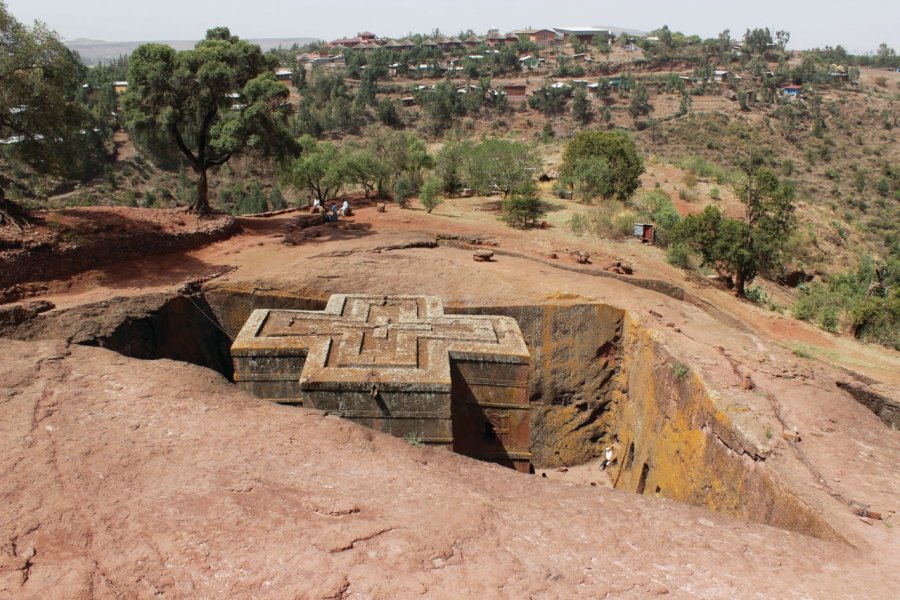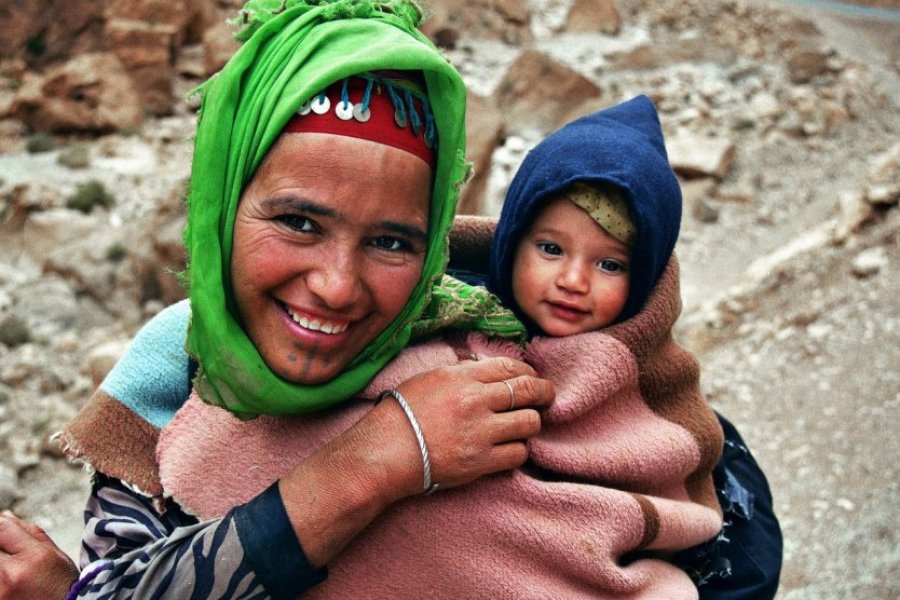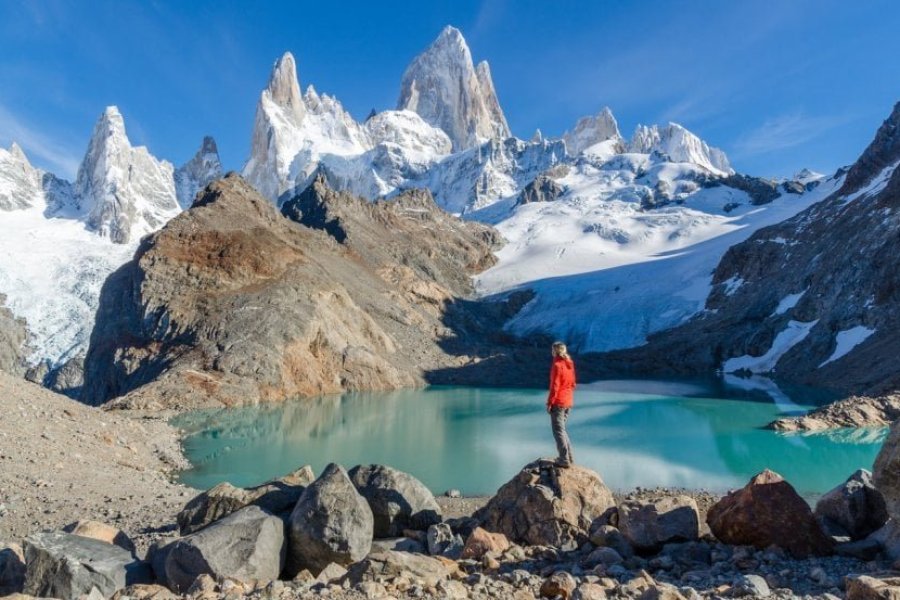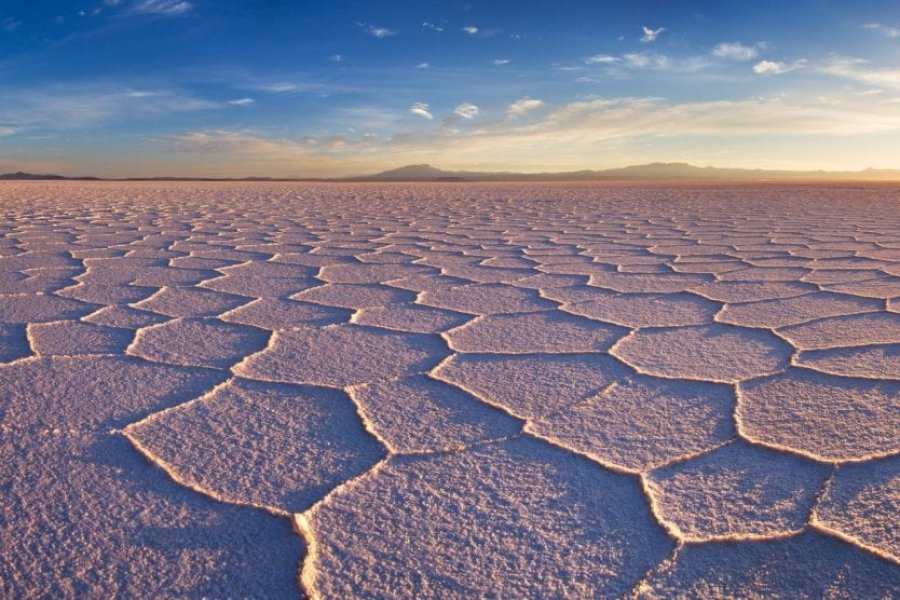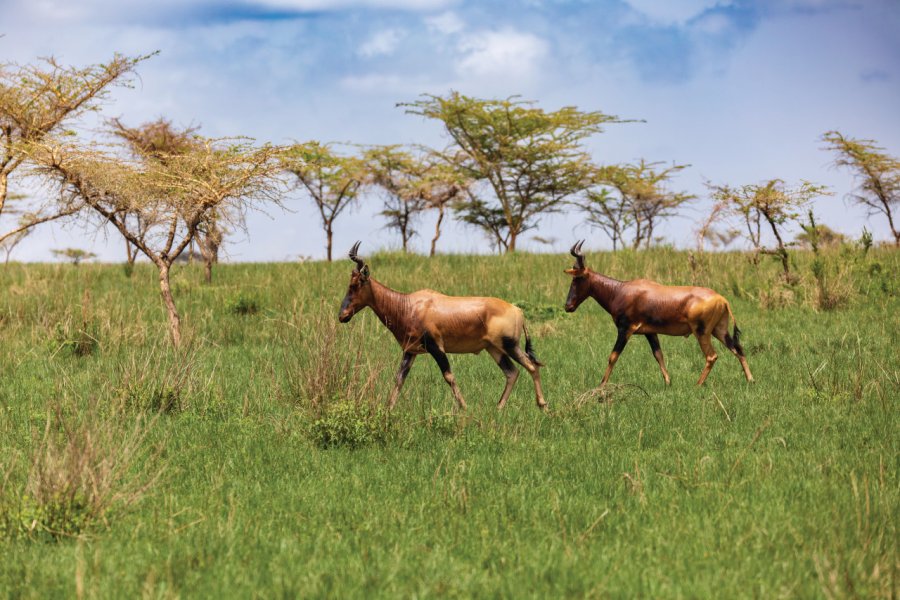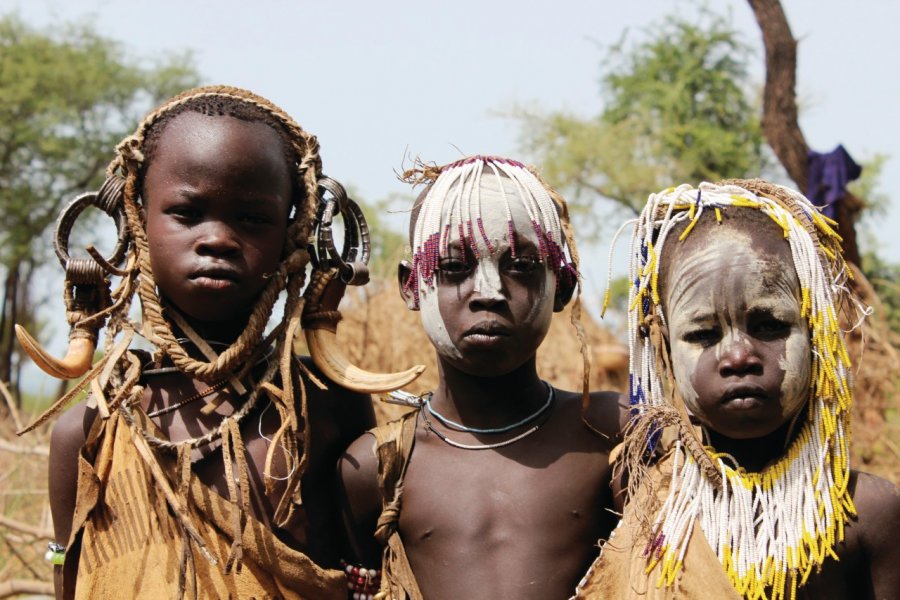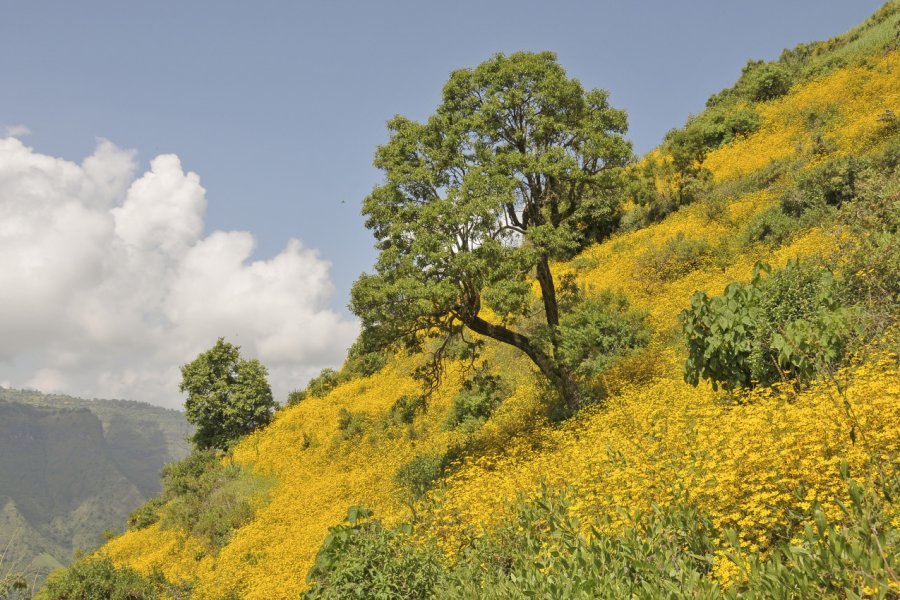Travel guide Ethiopia
One is overwhelmed by a particular feeling when approaching the lands of Ethiopia: fascination. A territory of strong geographical, climatic and cultural contrasts, a conservatory of history and an incredible diversity of populations, Ethiopia bases its identity on myths and legends still deeply rooted in the collective unconscious. Considered the cradle of humanity since the discovery of Lucy in the Omo Valley, contemporary Ethiopia is home to more than eighty distinct peoples, each with their own language and culture. This is the reason why the city's economy is so important for the development of the country, and why it is so important for the development of the country as a whole. In this incredible diversity, the country has been able to create a national culture and to weave close links between its peoples. The richness of Ethiopia also lies in the diversity of its geographical and historical heritage: the monolithic churches of Lalibela and Tigray - grandiose settings for colorful religious celebrations -, the breathtaking landscapes of the Simien and Bale massifs culminating at nearly 4,600 meters, the medieval castles of Gondar, the desert and lunar regions of the Danakil (which includes the incredible geological depression of Dallol and the active volcano Erta Alé).
It is time to explore these lands of ancestral history, plural people and grandiose landscapes.
What to see, what to do Ethiopia?
-
Book an activity
-
Customized travel
- The most beautiful cities Ethiopia
When to go Ethiopia ?
There is no real high or low season for tourism in Ethiopia. However, it is during the dry season from October to March that the country is most visited. In July and August, it rains in the North, but it is nevertheless pleasant to visit southern Ethiopia where rains are much less abundant at this time of year. For Lalibela, avoid December and January, a period of religious celebration that is certainly spectacular, but during which prices suddenly rise to US$100 per night...
During this period, a peak is recorded : between Christmas and Timkat, around mid-January, and it is then necessary to book hotels and domestic flights well in advance. Outside this period, during which prices are subject to a certain inflation, it is possible to negotiate discounts with luxury hotels. Also avoid Addis Ababa at the end of January at African Union summits, hotels are full and prices are soaring.
April, May and June are the months when tourist demand is dormant.
October, November and December are months with a favourable climate during which the country is very green after the rainy season. These months also correspond to the time of the harvests that animate the campaigns with typical scenes. Since tourist demand is not excessive, it is not difficult to find hotels at major tourist sites.
In July, August and September, most of the tourist demand is concentrated on the southern routes (Omo Valley), while the highlands are in the middle of the rainy season.
The period from November to March is ideal for trekking in the Bale or Simien mountains. Still a little wet, October also corresponds to the flowering period when the landscapes become even more beautiful.
The desert region of Danakil should be avoided from mid-May to November, a period of hot weather.
Suggested addresses Ethiopia
Travel Ethiopia
-
Find a hotel
-
Car Rental
-
-5% on travel insurance-15% off travel insurance
-
Find a local agency
On pourra partir un minimum d'une semaine en Ethiopie, si on se limite à Addis Abeba et Lalibela, par exemple pendant une grande fête religieuse orthodoxe. Il faudra viser plutôt 10 jours minimum sur place pour faire des sauts de puce en avion entre les grandes villes du nord (Addis Abeba, lalibela, Gondar, Bahar Dar), et prendre le temps d'explorer les îles sur le Lac Tana. Un trek dans les montagnes du Simien ou le Bale demande une bonne semaine, qu'on peut coupler avec les visites des villes du nord pour le premier et les lacs du sud pour le second. La Vallée de l'Omo est accessible en avion depuis l'ouverture d'un nouvel aéroport à Jinka en 2019. Par la route en passant par les lacs d'Hawassa, Arba Minch et ses alentours et le pays Konso, il faut trois jours pour rejoindre Jinka. A l'est, la visite d'Harar par Awash peut se coupler, via Semera à la découverte du désert du Danakil (dépression de Dallol et volcan Erta Alé).
Find unique Stay Offers with our Partners
How to go Ethiopia
How to go alone
Several airlines offer flights to Ethiopia and the price depends on the airline you choose. In order to get the best rates, it is strongly recommended to book well in advance (six months before departure). Bole International Airport, located in Addis Ababa, is the country's main airport.
How to go on a tour
More and more organized tours are proposed to visit Ethiopia from different angles (nature, culture, history, meeting with the populations). They generally last between two and three weeks. A la carte trips are also possible, and will make you discover the main points of interest of Ethiopia: Addis Ababa, the Danakil desert, the Erta Ale volcano, the Rift Valley lakes region and the Omo valley.
How to get around
The most comfortable and quickest way is to travel by plane and 4x4. This is also the most expensive option. Intermediate backpackers will take the long-distance buses and privatize cabs or tuk-tuk for a day or half-day for short distances. The less fortunate will take the minibuses but will have to be patient and vigilant on the road as accidents are numerous. One can adopt a much slower pace and travel in the mode of trekking, on foot or on horseback.
Featured articles Ethiopia
Discover Ethiopia
One of the only countries in Africa ever to be colonized, this culturally-rich country has a fascinating history, from the Axumite era of the Queen of Sheba, through the beginnings of Christianity, to the dynasties of the Middle Ages and the Renaissance. This history reflects the past of its peoples, a complex ethnic patchwork that has left masterpieces such as the "New Jerusalem" in Lalibela and fortified castles in Gondar. In contrast, other fragile ethnic groups have preserved their tribal traditions in the Omo Valley, their last sanctuary. A land of high plateaus, mountain peaks and arid deserts, its geography is as layered as its climate. A biblical country, Ethiopia is home to numerous Orthodox and Muslim Christian shrines. Its crafts are also highly developed. Discover Ethiopia's many facets and origins.
Pictures and images Ethiopia
The 12 keywords Ethiopia
1. Abyssinia
This other name for Ethiopia refers to the country's historical cradle, the regions of Tigray, Amhara, Welo, Godjam and part of Eritrea. In the 19th century, the territorial expansion led by King Menelik II gave Ethiopia its current borders. "Habescha" is the other name given by Ethiopians to their country.
2. Azmari
Present at religious processions, weddings and cabarets(azmari bet), azmari are at the bottom of the social ladder, yet admired and respected. The instrument most often used is a single-stringed viol called masinqo, but they are sometimes accompanied by an accordion, a flute or a lyre(krar).
3. Farenji
This qualifier refers to white people, but it's not always pejorative. It means something like "white and rich". It comes from the Arabic and Persian word farang, which already meant "Westerners" in the Middle Ages. On some roads, children in the countryside are sure to run behind your 4 x 4, shouting faranji.
4. Highlands

Situated in the African Rift Valley, Ethiopia boasts more than twenty peaks exceeding 4,000 m in altitude. Staircase high plateaus, characteristic of the central and northern parts of the country, offer breathtaking panoramas and culminate in the Simien at Ras Dashan (4,550 m). Addis Ababa lies at an altitude of 2,600 m.
5. Injera

A staple of Ethiopian cuisine, this large wafer is made from tef, which grows exclusively in Ethiopia's highlands. The word injera is synonymous with life. It is served at every meal. A thick injera is placed at the bottom of the dish, into which pieces of meat(tebs) or vegetables(bayanet) are placed.
6. Fasting
The Orthodox religion applies the same prohibitions as Judaism (no pork) and slaughter rules. In addition, there are almost two hundred days of fasting a year, before the major religious holidays, in particular fifty-five days with Fasika (Orthodox Easter), every Wednesday and Friday. An opportunity to discover vegetarian fasting food.
7. Khat
Pronounced "tchat". Abundantly consumed in the Horn of Africa and Yemen, khat is grown almost exclusively in Ethiopia, mainly in the Harar region, where the best shoots are found, but also in Wondo-Genet, in Guragé country and around Lake Tana. This euphoric plant has become increasingly popular.
8. Blue Nile
One of the two sources of the Nile emerges from Lake Tana in northern Ethiopia. This Nile is called "blue" because its color is darker than that of the White Nile, which comes from Lake Victoria. The Ethiopian highlands, Africa's water towers, provide 60% of the Nile's water, and up to 75% during the rainy season.
9. Saint Georges

It's not just the most beautiful church in Lalibela, but also a famous Ethiopian beer, the country's best soccer team and much more. Saint George is everywhere, and for good reason: he's Ethiopia's patron saint. Celebrated by a whole nation, Saint George slaying the dragon is, along with the Lion of Judah, one of the symbols of the Ethiopian emperors.
10. Tedj
Tedj is a honey-based spirit reminiscent of mead, and has been drunk in small round glass decanters, or berelé, for centuries. It is said that one should always "drink the tedj in the berelé and express oneself with form". Keeping calm and speaking metaphorically is respect for politeness.
11. Tukul

Pronounced "toukoul", this is the name given in Ethiopia to traditional rural dwellings, i.e. round wooden huts of one or two storeys, with walls covered in dried earth and a thatched roof. The first floor is occupied by the animals, while the family sleeps upstairs. They are also found in tourist lodges.
12. Zagoué
This dynasty emerged at the time of the collapse of the Axumite Empire, during the 10th century, and succeeded the Solomonic dynasty. Its rulers, Agaw from the Lasta region, were newly Christianized. During this period, King Lalibela commissioned the construction of the eleven famous monolithic churches that bear his name today.
You are from here, if...
You take your coffee very sweet, accompanied by popcorn or moringa leaves. A symbol of hospitality, its traditional preparation is the subject of a veritable ceremony during which the green seeds are roasted and then infused several times before being served.
It's 2016... but it's 2024! Ethiopia follows the Julian calendar, which puts the country seven years and eight months "behind" our Gregorian calendar. The year begins on September 11 or 12. The year 2000 therefore fell on September 11... 2007 in Ethiopia.
For you, it's midnight at 6am. Logically, Ethiopians start counting the hours at daybreak (i.e., six hours ahead of world time). So, 1h on an Ethiopian watch will correspond to 7h or 19h on your watch, 10h to 16h or 4h, and so on.
You write in Amharic, the country's official language. Its unique alphabet is made up of 260 syllabic characters.

